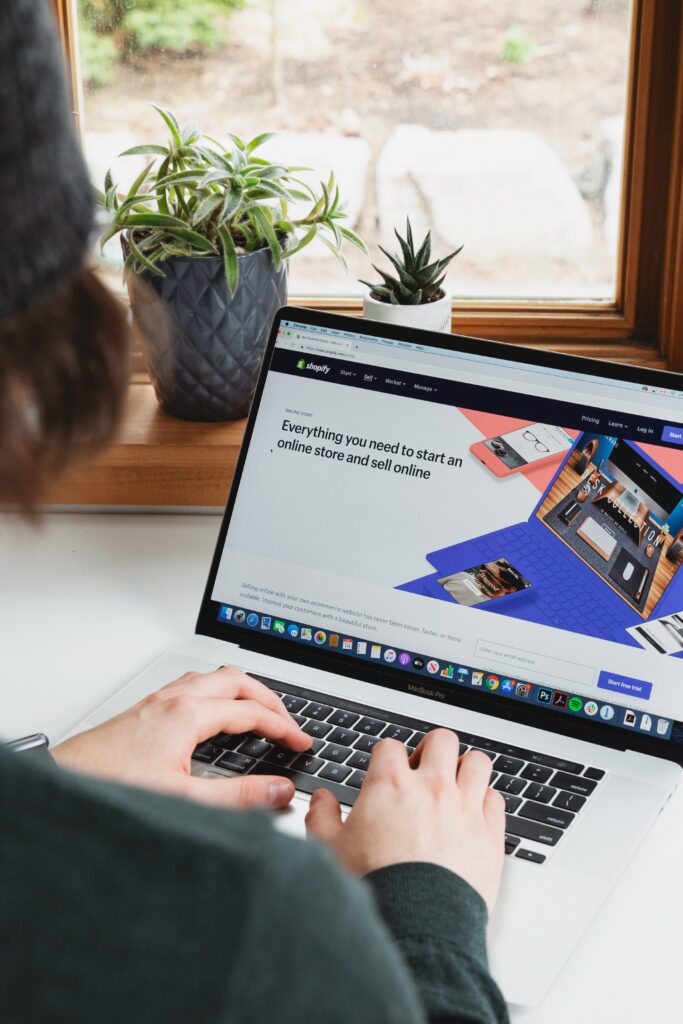Imagine having the opportunity to create a successful home-based business while having the flexibility to spend more time with your family. With “The Ultimate Guide to Selling on Amazon FBA,” you can turn this dream into a reality. This comprehensive guide is designed specifically for moms who are ready to embark on their journey of selling on Amazon. Packed with valuable insights and strategies, this guide will empower you to navigate the world of Amazon FBA with confidence, maximizing your profits and achieving your entrepreneurial goals. Whether you are a beginner or have some experience, this guide will equip you with the knowledge and tools you need to thrive in the world of online entrepreneurship. Say goodbye to endless Google searches and overwhelming trial and error – this guide is your key to success on Amazon FBA.
The Ultimate Guide to Selling on Amazon FBA
selling on Amazon is a fantastic opportunity for anyone looking to start their own business or earn additional income. With millions of customers and a highly reputable platform, it’s no wonder that so many people are turning to Amazon FBA (Fulfillment by Amazon). Whether you’re a stay-at-home mom or someone wanting to break into the world of e-commerce, this comprehensive guide will walk you through every step of the process. From choosing a product to scaling your business, we’ve got you covered.
Take the 7 Day Money Challenge
Choosing a Product
Researching Popular Niches
Choosing the right product is crucial to the success of your Amazon FBA business. To start, research popular niches and identify products with high demand. It’s essential to find a balance between a niche that’s profitable and one that you’re passionate about or have knowledge in. Utilize tools like Jungle Scout or Helium 10 to gather data and insights on product trends, sales estimations, and competition.
Analyzing Competition
Once you’ve identified potential niches, it’s important to analyze the competition. Look for products with moderate demand and low competition. High competition can be challenging for new sellers to break into, so focusing on a niche with less competition will give you a better chance of success. Take note of the top sellers and analyze their product listings, pricing strategies, and customer reviews.
Considering Profit Margins
While choosing a product, always consider the profit margins. Take into account the product’s manufacturing, shipping, and packaging costs, as well as Amazon’s fees and your desired profit margin. Remember that selling low-priced products with thin profit margins might require higher sales volume to make a substantial profit. Finding a balance between product price, expenses, and desired profit is key to building a profitable Amazon FBA business.
Evaluating Seasonality
Some products are seasonal and experience fluctuating demand throughout the year. Consider the seasonality of your chosen product and how it may impact your sales and inventory management. While seasonal products can be highly profitable during their peak times, they may also require careful planning and storage during off-peak seasons. Evaluate whether you’re comfortable with the potential variability in sales that comes with seasonal products.
Creating Your Seller Account
Choosing an Account Type
To get started with Amazon FBA, you’ll need to create a seller account. Amazon offers two types of accounts: Individual and Professional. An Individual account is suitable if you plan to sell fewer than 40 items per month, while a Professional account is recommended for those aiming to sell in higher volumes. Consider your selling goals and choose the account type that aligns with your business objectives.
Registering as a Professional Seller
To register as a Professional Seller, follow Amazon’s step-by-step process to provide necessary information such as business name, address, and bank account details. You may also be required to provide additional documentation, depending on your location. Registering as a Professional Seller comes with a monthly subscription fee, but it allows you to access advanced selling features, compete for the Buy Box, and sell in additional categories.
Setting up Payment Methods
Setting up your payment methods is an important step in becoming an Amazon seller. Amazon offers a few options for receiving payments, including direct deposit and Amazon Pay. Direct deposit is the most common and convenient method, allowing Amazon to transfer your funds directly into your bank account every 14 days. Familiarize yourself with the payment options available and set up your preferred method to ensure smooth transactions.
Completing Your Seller Profile
Your seller profile is an opportunity to showcase your brand and build trust with customers. Complete your seller profile with accurate and detailed information about your business, such as your logo, mission statement, and contact details. This information will be visible to potential customers, so make sure it reflects your brand identity and professionalism.
Navigating the Seller Dashboard
Once your seller account is set up, you will have access to the Seller Dashboard. This is your central hub for managing your Amazon FBA business. Familiarize yourself with the various sections of the Seller Dashboard, such as inventory management, order fulfillment, and sales reports. Spend time exploring the different tools and resources available to optimize your selling experience.

Start a Home Based Business Now
Understanding Fulfillment by Amazon (FBA)
Explaining FBA Benefits
Fulfillment by Amazon (FBA) is a program that allows you to leverage Amazon’s extensive fulfillment network. When you enroll in FBA, you send your inventory to Amazon’s warehouses, and they handle the storage, packaging, and shipping of your products. The benefits of using FBA include access to Amazon Prime customers, customer service support, and the ability to offer fast and reliable shipping options.
Differentiating FBA and Fulfilled by Merchant (FBM)
Fulfilled by Merchant (FBM) is an alternative to FBA, where you handle all aspects of order fulfillment, including storage, packaging, and shipping. While FBM gives you more control over the process, FBA offers numerous advantages such as Prime eligibility and the ability to outsource tedious tasks. Consider the pros and cons of each option and choose the fulfillment method that aligns with your business goals and capabilities.
Calculating FBA Fees
Using FBA comes with fees that you need to consider when pricing your products and evaluating profitability. Amazon’s FBA fees include storage fees, fulfillment fees, and additional services fees. These fees vary based on factors such as product size, weight, and length of storage. Factor in the FBA fees when determining your product pricing to ensure you’re still making a profitable margin.
Managing Inventory in FBA
One of the significant benefits of FBA is Amazon’s inventory management system. Amazon tracks your inventory levels, sends alerts for restocking, and manages the logistics of shipping products to fulfill customer orders. Make sure to monitor your inventory regularly and utilize Amazon’s inventory reports and tools to ensure you always have the right stock levels. This helps prevent stockouts or overstocking situations that can impact your sales and customer satisfaction.
Handling Returns and Customer Service
With FBA, Amazon handles returns and customer service on your behalf, providing a hassle-free experience for both you and the customers. Amazon has a well-established returns process, and they handle customer inquiries and complaints. However, it’s still essential to stay engaged with your customers and address any issues promptly. Monitor your seller account for customer messages and actively participate in maintaining a positive customer experience.
Sourcing Products
Sourcing from Manufacturers and Suppliers
Sourcing products directly from manufacturers and suppliers is a common practice in the Amazon FBA business. Establishing relationships with manufacturers allows you to access products at wholesale prices and maintain control over the quality and branding. Research and connect with manufacturers and suppliers in your chosen niche, request product samples, and negotiate pricing and terms to ensure a reliable supply chain.
Utilizing Wholesale and Retail Arbitrage
Wholesale and retail arbitrage are strategies where sellers leverage price differences between different markets to generate profit. With wholesale arbitrage, you purchase products in bulk from wholesalers at discounted prices and sell them on Amazon at a higher price. Retail arbitrage involves sourcing products from retail stores or online marketplaces and reselling them on Amazon. Both methods require thorough research, scouting for bargains, and understanding market demand.
Private Labeling and Product Branding
Private labeling involves sourcing generic products, customizing them with your own brand, and selling them under your own label. This approach allows you to differentiate your products and build a brand identity. Research reliable manufacturers who offer private labeling services, create attractive packaging, and invest in branding efforts to establish a unique selling proposition.
Dropshipping
Dropshipping is a business model where you partner with suppliers who handle inventory storage and shipping directly to customers. As a dropshipper, you don’t have to invest in inventory upfront, making it an appealing option for those starting with limited capital. However, dropshipping comes with its own set of challenges, such as finding reliable suppliers and managing customer expectations. Carefully evaluate the pros and cons before deciding if dropshipping is the right strategy for your Amazon FBA business.
Local and International Sourcing
When sourcing products, consider both local and international options. Local sourcing offers faster shipping times and potentially lower shipping costs. It also allows for easier communication with suppliers and faster resolution of any issues. On the other hand, international sourcing can provide access to unique or lower-cost products. Research and weigh the benefits and drawbacks of both options to determine the best sourcing strategy for your business.

Product Listing Optimization
Writing Effective Product Titles
An effective product title is a vital element in optimizing your product listings. Craft product titles that are informative, keyword-rich, and include essential product details like brand, size, color, and key features. Be mindful of Amazon’s guidelines for formatting and length. Including relevant keywords in your titles helps improve your product’s visibility and search rankings, ultimately leading to more traffic and potential sales.
Crafting Compelling Product Descriptions
Product descriptions should be well-written, engaging, and persuasive. Highlight the key features, benefits, and unique selling points of your products. Use descriptive language to create vivid imagery and make customers feel confident in their purchase. Include important details such as dimensions, materials, and specifications, ensuring customers have all the necessary information to make an informed buying decision.
Optimizing Bullet Points and Key Features
Bullet points are a concise way to communicate important product information quickly. Use bullet points to highlight key features, benefits, and specifications. Focus on what sets your product apart from the competition and why customers should choose it. Keep the bullet points clear, easy to read, and scannable. Incorporate relevant keywords to optimize your listings for search rankings.
Using High-Quality Images
High-quality product images are essential for capturing customers’ attention and increasing conversions. Take professional-looking product photos that accurately represent your products. Use well-lit environments and multiple angles to showcase your products effectively. Follow Amazon’s image guidelines, including size, resolution, and background requirements, to ensure your images meet their standards and enhance your listing’s visual appeal.
Implementing Relevant Keywords and SEO
Optimizing your product listings for search engines is crucial for visibility and discoverability. Conduct thorough keyword research to identify relevant and high-converting keywords for your products. Incorporate these keywords strategically throughout your titles, bullet points, and product descriptions. Don’t overstuff keywords, as it can negatively impact readability and violate Amazon’s guidelines. Follow best practices for SEO to maximize your product’s exposure and attract organic traffic.
Pricing and Competitive Strategies
Understanding Amazon’s Buy Box
The Buy Box is a highly coveted feature on Amazon that significantly influences sales. When multiple sellers offer the same product, Amazon chooses one seller to display in the Buy Box where customers can add the item to their cart with one click. Winning the Buy Box can lead to increased sales and visibility. Factors that influence Buy Box eligibility include pricing, seller performance metrics, overall customer experience, and availability of stock.
Setting Competitive Prices
Pricing your products competitively is crucial for winning the Buy Box and attracting customers. Research similar products and their prices to get an idea of market standards. Take into account your production costs, Amazon’s fees, and desired profit margins when setting your prices. Utilize dynamic pricing tools that automatically adjust prices based on market demand and competitor prices to help you stay competitive.
Monitoring Competitor Pricing
Regularly monitor competitor prices to stay informed about market trends and adjust your prices accordingly. Tools like CamelCamelCamel or Keepa track the price history of products, allowing you to identify pricing patterns and adjust your strategy accordingly. Stay flexible and proactive in your pricing approach to remain competitive in a dynamic marketplace.
Using Promotions and Discounts
Running promotions and discounts can help boost sales and attract new customers. Amazon offers various promotion types, such as Lightning Deals, Coupons, and Percentage Off promotions. Evaluate which promotions align with your marketing goals and implement them strategically. Use promotions to stimulate sales during slower periods, launch new products, or reward loyal customers.
Implementing Bundling and Cross-Selling
Bundling products or offering cross-selling opportunities can increase average order value and customer satisfaction. Identify complementary products that work well together and create bundles or packages. Highlight the additional value customers receive by purchasing the bundle. Utilize cross-selling features on Amazon to recommend related products to customers during their shopping journey. These strategies can help increase sales while providing a better overall shopping experience.

Managing Inventory
Tracking Inventory Levels
Proper inventory management is crucial for maintaining smooth operations and meeting customer demands. Regularly track and monitor your inventory levels, especially during peak seasons and promotions. Accurate inventory tracking helps prevent stockouts, ensures efficient order fulfillment, and minimizes storage costs. Utilize inventory management software or Amazon’s built-in tools to keep tabs on your inventory levels.
Utilizing Amazon’s Inventory Management Tools
Amazon provides various inventory management tools to help you effectively manage your stock. These tools can assist in tracking inventory levels, setting up automatic reorder alerts, managing stock in multiple warehouses, and forecasting future demand. Familiarize yourself with these tools and take advantage of their features to streamline your inventory management process.
Managing Replenishment and Restocking
Maintaining adequate stock levels is crucial to prevent stockouts and ensure consistent sales. Analyze sales data, track trends, and set up reorder triggers to plan your replenishment and restocking efficiently. Consider lead times, production schedules, and shipping times when calculating the optimal reorder quantities. Timely and accurate restocking ensures you can meet customer demands and maintain a healthy sales velocity.
Dealing with Seasonal and Slow-Moving Inventory
Seasonal and slow-moving inventory can pose challenges to your Amazon FBA business. For seasonal products, plan your ordering and restocking schedules accordingly to optimize for peak sales periods. For slow-moving inventory, evaluate the reasons behind the slow sales and consider implementing strategies like promotions, bundle offers, or even discontinuing the product if it consistently underperforms. Optimize your inventory management strategy to reduce carrying costs and maximize profitability.
Avoiding Stockouts and Overstocking
Managing stockouts and overstocking is essential for maintaining a healthy inventory balance. Stockouts negatively impact sales and customer trust, while overstocking ties up valuable capital and storage space. Regularly analyze your sales velocity, monitor demand patterns, and adjust your reorder quantities accordingly. Utilize inventory forecasting tools to anticipate demand and prevent stockouts or overstocking situations.
Marketing and Advertising
Understanding Amazon’s Advertising Options
Amazon offers various advertising options to promote your products and drive visibility. Sponsored Product Ads, Sponsored Brands, and Sponsored Display Ads are among the most popular advertising formats. Sponsored Product Ads appear within search results, while Sponsored Brands display your brand logo and a customized headline. Sponsored Display Ads appear on product detail pages, targeting customers who have shown interest in similar products. Understand the differences between these options and utilize them strategically to increase your product’s discoverability.
Creating Sponsored Product Campaigns
Creating Sponsored Product campaigns is an effective way to boost visibility and drive sales. Identify high-converting keywords relevant to your products and create targeted campaigns to improve your product’s search rankings. Optimize your campaign by monitoring keyword performance, bid adjustments, and targeting options. Regularly evaluate the success of your campaigns and make necessary adjustments to maximize your advertising ROI.
Utilizing Amazon Coupons and Promotions
Amazon Coupons and Promotions allow you to offer discounts to customers, increasing the likelihood of sales and repeat purchases. Coupons are digital or printed discounts that customers can redeem at checkout. Promotions, on the other hand, offer discounts on the product listing itself. Both options provide incentives for customers to choose your product over competitors. Utilize these tools to attract price-conscious customers and stimulate sales.
Implementing Influencer Marketing
Influencer marketing involves collaborating with social media influencers who have a significant following and influence within your target audience. Partnering with influencers can help create brand awareness, drive traffic to your product listings, and increase conversions. Reach out to influencers in your niche, negotiate partnership terms, and track performance to ensure you’re getting a return on your investment.
Utilizing Social Media and Content Marketing
Leverage the power of social media and content marketing to promote your products and engage with your audience. Create compelling content such as product tutorials, how-to guides, and behind-the-scenes glimpses of your brand. Share this content across social media platforms to expand your reach and build a loyal following. Engage with your audience, respond to comments, and foster a community around your brand. Regularly share your product listings and promotions to drive traffic and increase sales.
Optimizing Product Reviews and Ratings
Encouraging Genuine Customer Reviews
Positive customer reviews and ratings are vital for driving sales and building trust with potential customers. Encourage customers to leave honest reviews by sending follow-up emails, offering incentives, or including inserts in your product packaging. However, it’s essential to adhere to Amazon’s guidelines and policies regarding customer communication and incentivization.
Managing and Responding to Reviews
Monitoring and responding to reviews is crucial for maintaining a positive brand image and addressing customer concerns. Regularly check your product listings for new reviews and promptly respond to both positive and negative feedback. Thank customers for their positive reviews and address any complaints or issues raised in negative reviews. Show that you’re actively engaged and committed to providing excellent customer service.
Handling Negative Reviews
Negative reviews are inevitable, but they provide an opportunity for growth and improvement. Respond to negative reviews with empathy and a willingness to resolve the customer’s concerns. Offer solutions, replacements, or refunds where appropriate. Turning a negative experience into a positive one can significantly impact the perception of your brand. Learn from negative feedback and continuously improve your products and customer service.
Leveraging Product Ratings
Product ratings play a significant role in customer decision-making. Aim to maintain high product ratings by delivering exceptional products and experiences. Not only do high ratings attract customers, but they also contribute to winning the Buy Box. Focus on consistently delivering quality products, addressing customer concerns, and providing exceptional customer service to maintain a high rating score.
Utilizing Amazon’s Vine Program
Amazon’s Vine program is an invitation-only service where trusted reviewers receive free products to provide honest and unbiased reviews. Participating in the Vine program can help generate quality reviews and build credibility for your products. However, it’s important to note that you cannot directly request reviews from Vine participants. Focus on creating excellent products and optimizing the customer experience to increase your chances of being selected by the Vine program.
Scaling Your Amazon FBA Business
Expanding Product Selection
Once you’ve successfully established your Amazon FBA business, consider expanding your product selection to increase your earning potential. Analyze market trends and customer demand to identify new product opportunities. Leverage your existing customer base and build relationships with suppliers to introduce new products. Gradually expand your product offering to diversify your revenue streams and target a wider audience.
Exploring New Marketplaces
Amazon is just one marketplace among many. Expand your reach by exploring other e-commerce platforms and marketplaces. Platforms like eBay, Walmart, or Shopify can offer additional sales channels and access to new customers. Research the requirements and audience demographics of each platform and adapt your strategy accordingly. Diversifying your online presence minimizes the risk of relying solely on Amazon and expands your business’s growth potential.
Automating Order Fulfillment
As your business scales, consider automating order fulfillment to streamline operations and increase efficiency. Fulfillment by Amazon (FBA) already offers automated storage, packaging, and shipping services, but there are additional tools and software available to automate other aspects of your business. Look into order management systems, inventory synchronization tools, and shipping software to reduce manual tasks and focus on growing your business.
Outsourcing Tasks and Hiring Virtual Assistants
Outsourcing repetitive or time-consuming tasks can free up your time and allow you to focus on higher-value activities. Consider hiring virtual assistants or outsourcing tasks like customer service, listing optimization, or social media management. Evaluate your strengths and weaknesses to determine which tasks can be effectively delegated. Trustworthy freelancing platforms such as Upwork or Fiverr can help you find experienced professionals to assist with these tasks.
Developing a Brand and Brand Recognition
As you scale your Amazon FBA business, focus on developing a strong brand and brand recognition. Invest in professional branding elements, including logos, packaging design, and website development. Consistently deliver excellent quality products, outstanding customer service, and a positive customer experience to build a loyal customer base. Leverage social media and content marketing to establish a brand voice and engage with your audience. A solid brand presence will differentiate you from competitors and foster long-term success.
Selling on Amazon FBA offers a world of opportunities for aspiring entrepreneurs, and this ultimate guide has covered all the essential steps to get you started. From choosing the right product to scaling your business, following these strategies will set you on the path to success. Remember, building an Amazon FBA business requires dedication, adaptability, and continuous learning. Embrace the journey, stay informed about industry trends, and always be ready to evolve your strategies to stay ahead in the competitive e-commerce landscape. Now, it’s your turn to embark on your Amazon FBA journey and turn your dreams into reality!


